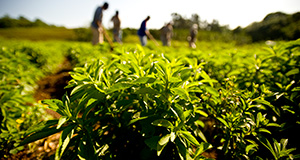The European Stevia Association (EUSTAS) (1) and the International Stevia Council (ISC) (2) offered the following comments on the decision of the land court Konstanz [Az: 7 O 32/12 KfH] and a press release from the consumer advice centre of Baden-Württemberg e.V. in regard to the court decision on stevia sweetener and its sweet compounds, steviol lycosides. Steviol glycosides are approved as a new sweetener under European law and can be used in multiple food and beverage categories. Since 2011, steviol glycosides have been enjoyed successfully by consumers in all EU countries at an ever-growing rate. This sweetener appeals to consumers who desire a more balanced and healthy lifestyle, based on its natural occurrence in the stevia leaf.
The press release (3) states that, “steviol glycosides do not occur naturally in foods” and that “the sweetener has nothing to do with the actual plant”. These statements are incorrect and therefore misleading consumers. Steviol glycosides are the sweet compounds that occur originally in the leaves of the stevia plant and that are extracted using conventional plant extraction techniques as described in the Regulation (EU) No 231/2012 (4):

